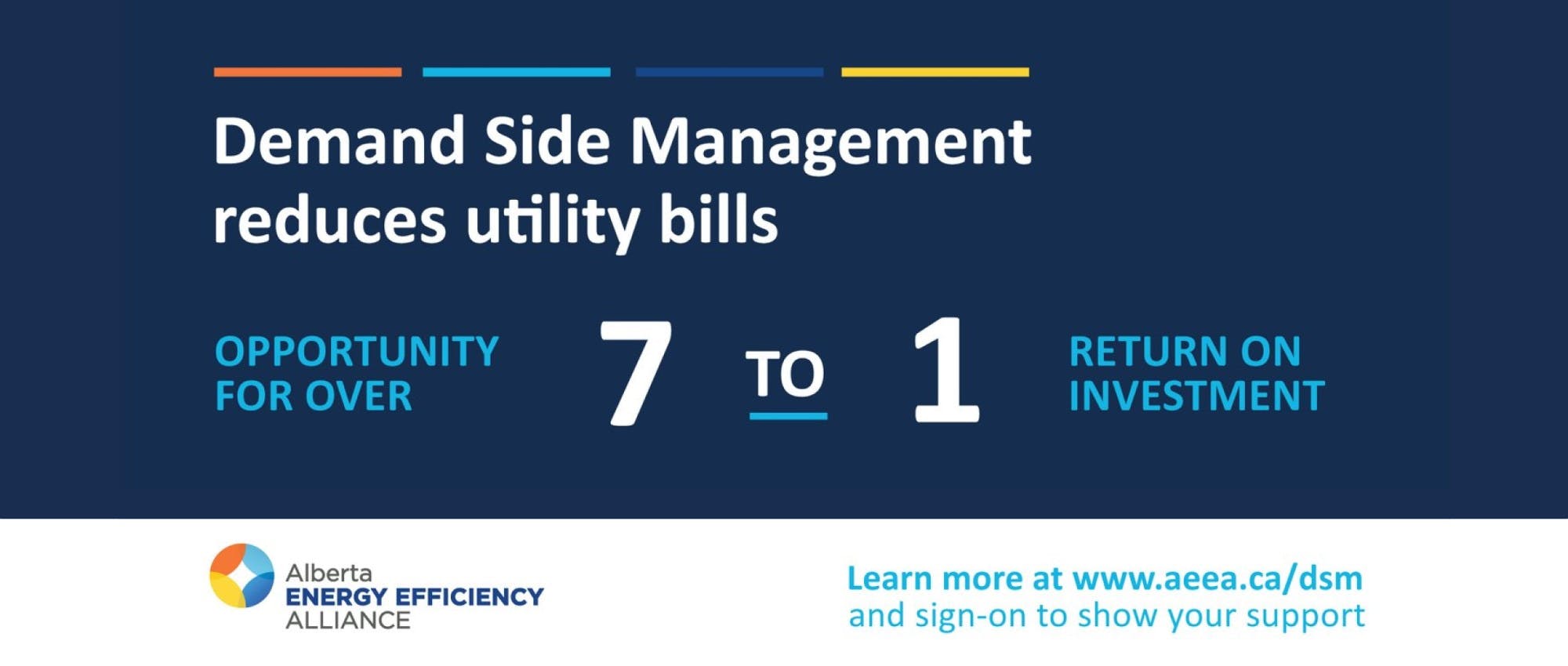Unlocking GHG reductions and lowering utility bills at the same time

This is a guest blog post from Jesse Row, Executive Director of the Alberta Energy Efficiency Alliance (AEEA). Alberta Ecotrust’s Climate Innovation Fund is supporting the AEEA's research on Alberta’s demand side management opportunity.
The cost of fighting climate change is taking centre stage with the City of Calgary’s climate strategy update currently before council. The strategy estimates $87 billion of investment (or $3 billion per year) will be needed to reach net zero emissions by 2050. But this investment will not come from City government alone. The vast majority of it will come from private investments and the investments are expected to return $60 to $80 billion in energy savings. This begs the question: How will the private sector be supported to make these investments, and how can they lead to maximum energy savings?
One of the easiest and most widely used ways to unlock private investment for emissions reduction, and save money at the same time, is utility demand side management or DSM.
DSM empowers consumers to use energy more wisely and avoid high prices by influencing how and when electricity and natural gas is used. DSM gives all consumers – residential, commercial, farm and industrial – more options to save energy and reduce their bills.
Large-Scale Investments Already Happening
DSM has been so successful that there is now over $10 billion invested through utility systems every year in Canada and the U.S. These investments leverage significantly more funding from the private sector. For example, if Alberta were to take a middle-of-the-road approach to DSM, compared with other provinces, there would be approximately $500 million of DSM projects happening every year adding up to $1 billion of utility bill savings annually. This would support thousands of jobs in the province and provide emission reductions while also reducing utility bills.
What is DSM?
Common approaches to utility demand side management include:
● Demand response – consumers are paid to reduce demand when prices are high, bringing down the market price for everyone
● Energy efficiency – support to choose efficient products when making upgrades to a building or industrial facilities (This also brings system-wide utility costs down for everyone.)
● Distributed energy resources – more integrated distributed generation (e.g., solar panels) and electricity storage increases the flexibility of how and when electricity is produced and consumed by households and businesses
Why DSM?
The reason DSM approaches like these are used in every province in Canada and state in the U.S. is because it reduces overall costs of the utility system. DSM provides a structure that supports consumers to make investment decisions that reduce their own utility bills and reduce system-wide costs. This saves all consumers money.
DSM is also complimentary to other ways to reduce emissions such as technology development and new regulations as it provides increased market demand for new technologies to be developed and deployed, and helps to build capacity in the market prior to new regulations taking effect.
Of course, this is just a starting point for the deep emission reductions required to achieve net zero. More will be needed, but this well-proven approach to reducing emissions gets us started while saving money at the same time.
More information on Alberta’s DSM opportunity can be found at: www.aeea.ca/dsm.
Related posts
Explore our most recent posts.



